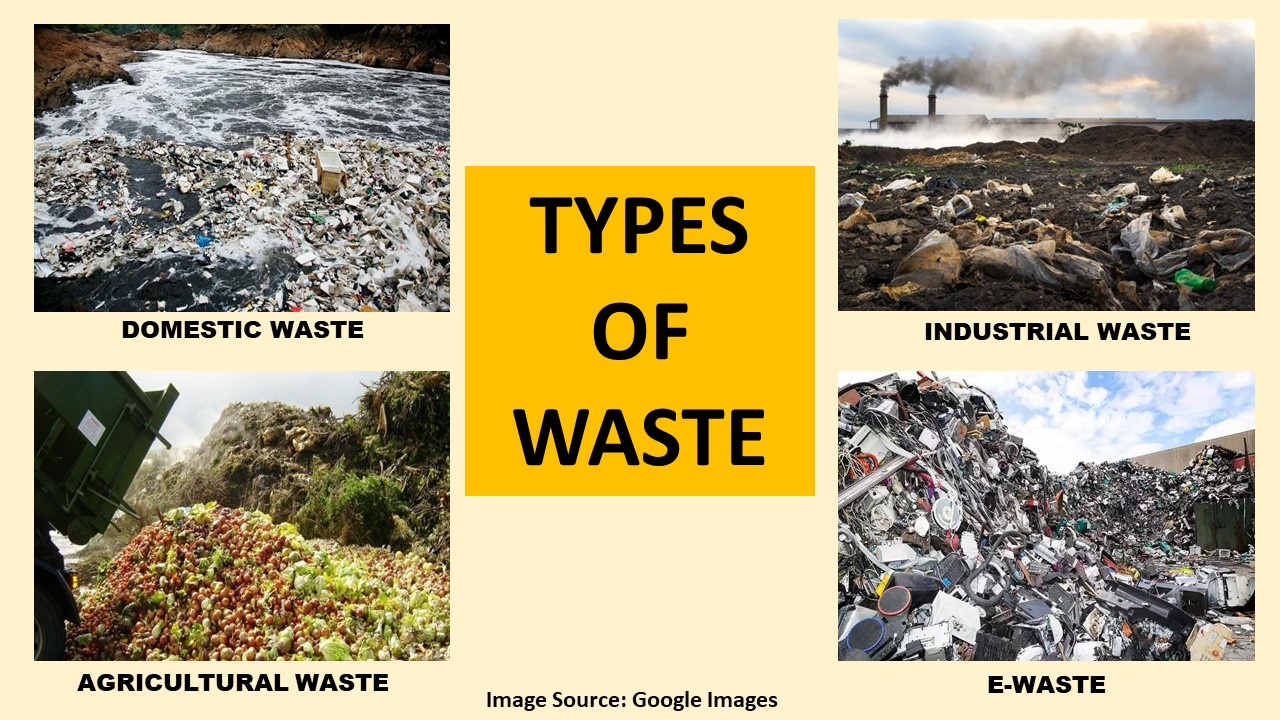Major Types and Sources of Waste Generation

Major Types and Sources of Waste Generation
Date: 30 December 2021
Author: Sri Nihal Tammana
Domestic Waste: Domestic Waste contains many forms of garbage mainly cardboard, wood, yard clippings, and many other types of waste produced. This garbage waste is usually found at homes. Household waste also contains various items which are very toxic and hazardous! Paints and pesticides are a few items that require very special methods of disposal as these components are very toxic. Pouring these substances down drains is a very bad thing to do because of the toxicity level of the Paint and Pesticides etc. This improper way of disposal can harm human health and the environment. Also, these substances pose a dangerous threat to pets, and the toxicity of the hazardous substances can kill fish in rivers. Toxic items which are improperly disposed of can also damage water treatment systems! This is how bad 1 cup of toxic substances can have on our Mother Earth.
Agricultural Waste: Agricultural waste is unwanted or used farm waste produced by agricultural operations or farmers. This is related to the growing of crops or domestication which is basically the raising of animals. Some farmers are known to take their agricultural waste and burn it because they don’t have any need, or they don’t even require or need the waste! This produces a lot of CO2 and toxic gases which has a humongous impact on the environment! Some examples of agricultural waste produced by farmers and agricultural companies include Grape Vines, Fruit-bearing trees, Vegetables, Date Palm Fronds, etc. These are some of the types of agricultural waste burned or thrown away by farmers.
Industrial Waste: Industrial waste is a term used to describe material considered to be no longer usable after a manufacturing process has been completed. There are many sources to how industrial waste is generated. Factories, Mining, Textile mills, Food manufacturing, Consumer goods, Industrial chemicals, Printing, and publishing can generate industrial waste. The Industrial waste can be hazardous or non-hazardous depending on the type of waste. Both types of industrial waste however can cause serious damage to our environment if the industrial waste is not disposed of properly. These examples are common types of industrial waste that can be hazardous to human life and the environment:
Electronic Waste: Have you ever broken an electronic device and thrown it away? That waste which you threw away is called electronic waste or e-waste! Electronic waste is a type of waste that classifies dead electronics which are thrown away in the trash!What is the environmental impact of E-Waste? We know that electronic waste contains batteries, chemicals, and wires right! Well in the trash, these electronics heat up rapidly and then they just explode or cause a fire releasing toxic chemicals into the air! Toxic substances leak from batteries/electronics which can contaminate the water and kill and severely injure humans/animals. Globally, more than 53.6 million tons of electronic waste is produced every year. What chemicals from electronics are released? As I mentioned, electronic waste contains toxic and hazardous components which are bad for our environment! Well, some of these toxic substances are Nickel Cadmium, Mercury, Lithium, etc. These are some of the many examples of toxic chemicals which contaminate water ?? and poison our environment.
Reducing all types of waste can reduce the number of deaths and protect our environment. Recycling as much waste as possible is another idea that we can do to help our environment because too much waste can damage our environment if not disposed of properly. We can also reuse ?? all the waste we use so less trash will go to landfills. Remember, Reduce, Reuse and Recycle!
Edited By: Dr. Anchal Garg
hdyu5vvvkq|10001522Por_Blogs|Contentdb